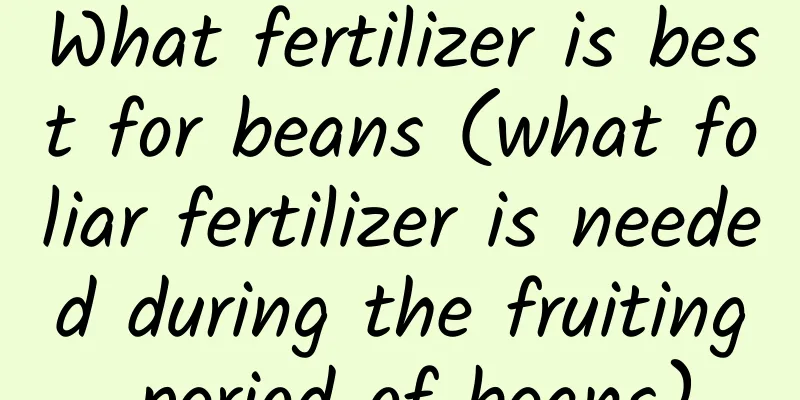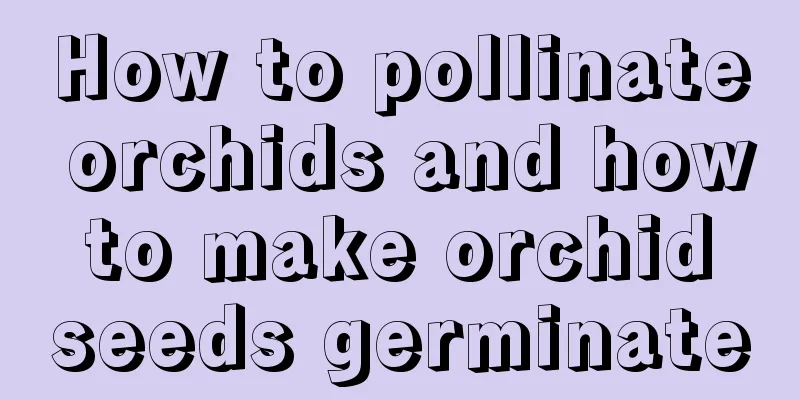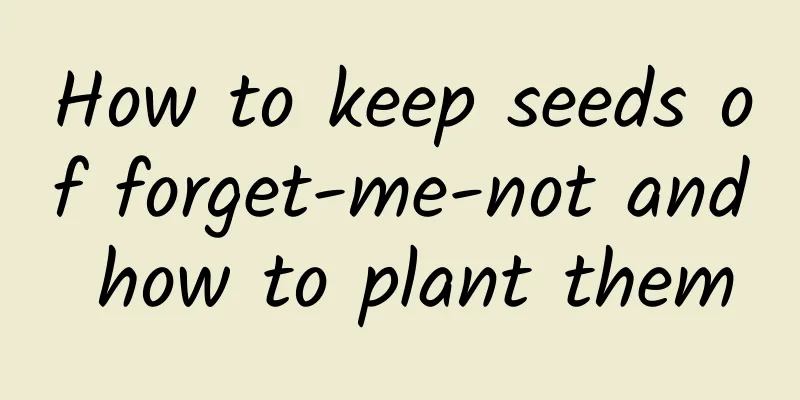What fertilizer is best for beans (what foliar fertilizer is needed during the fruiting period of beans)

|
Before and after the Grain Rain, there are many crops that can be planted, whether vegetables or grain crops, they can all be planted and transplanted. Today, I will share some tips on fertilizing cowpeas, a type of beans. I hope it will be helpful to you! 1. Farmyard manureHow can vegetable cultivation be without farmyard manure? It not only contains a large number of elements such as nitrogen, phosphorus and potassium that crops need, but also contains other nutrients such as humic acid, amino acids, minerals, etc. In addition, applying more manure can reduce the fixation of phosphorus on calcium and magnesium, which will help the vegetables grow better and taste better. It is recommended that farmers use 1000-1500 kg of fully decomposed farmyard manure + 30 kg of compound fertilizer per mu when preparing the land, and apply it in ditches or holes. It is best to plant beans on high ridges, because beans are dryland crops and cannot tolerate waterlogging. However, it should not be too high, about 15 cm high is fine. Of course, the crops cannot be planted too densely. A densely enclosed field with no air circulation will cause flowers and pods to fall off, and easily lead to diseases and insect pests. In addition, when we use farmyard manure, we must choose fully decomposed farmyard manure, and not use raw manure. Raw manure can easily cause plant root burns, carry pathogens and insect eggs, and nutrients are not easily absorbed, so we must pay special attention to this. If there is no farm manure, we can also use commercial organic fertilizer and biological fertilizer + humic acid or potassium humate instead, and the effect is also good. 2. Do not apply nitrogen fertilizer exclusivelyBeans are leguminous crops, which have the ability to fix nitrogen. We should not underestimate the rhizobia, which are like a small nitrogen fertilizer factory that can convert nitrogen in the air into nitrogen fertilizer for crops to absorb and use. Therefore, we should not apply too much nitrogen fertilizer. Too much nitrogen fertilizer can easily cause the plant to grow too tall. Only growing stems and leaves will delay flowering, and even if it blooms, the amount of pods produced will not be large, which will affect the yield. In addition, too much nitrogen fertilizer will cause the plants to be tender and juicy, the cell membrane of the plants will become thinner, and the plants will be more susceptible to invasion by pests and diseases. It is recommended to apply 7-10 kg of urea per mu to promote seedling growth during the seedling stage of beans. After flowering and pod formation, use less nitrogen fertilizer and mainly use phosphorus and potassium fertilizer. 3. Centralized fertilization is not advisableIn the early stage after planting, beans should be watered once to promote seedling growth. At the same time, inter-cultivation should be carried out to ensure that a large amount of water enters the root system and provides sufficient water for root growth. In addition, cowpeas have a greater demand for water during the flowering and pod-forming stage, and need to be watered enough at one time. When the main vine catkins grow to 2/3, water them again to keep the soil moist, but don't water them too much, as cowpeas are not resistant to waterlogging. In addition, during the flowering period of beans, you can add some quick-acting nitrogen fertilizer to ensure the effective growth of flower catkins and prevent the leaves of cowpeas from falling off in large numbers. In short, each stage has its own nutrient requirements. Remember to give enough once and then forget about it. Top dressing during the critical period will be of great help to the yield. 4. Apply foliar fertilizer to prevent premature agingAs the root system ages, it absorbs less nutrients, and the leaves tend to decay, causing yields to drop. It is recommended to apply less nitrogen fertilizer and more phosphorus and potassium fertilizer after beans bloom and set pods. You can choose 0.2% to 0.3% potassium dihydrogen phosphate foliar fertilizer + 30 kg for spraying during the peak flowering and setting period of beans, and spray again after ten days to prevent premature aging of plants, promote continuous flowering and setting pods, and increase yield. In summary, do not use raw manure for beans, do not apply nitrogen fertilizer excessively, do not apply fertilizer in a concentrated manner, combine it with foliar spraying, and follow the fertilization method of "apply enough base fertilizer, light application in the seedling stage, and heavy application in the flowering and fruiting stage", and you can make one bean produce a basket! |
>>: How to make garlic grow bigger (what medicine can make garlic swell)
Recommend
How to make the hydroponic pennywort bloom
1. Suitable temperature If you want the hydroponi...
Which region is suitable for growing red pomelo?
Red Pomelo Planting Conditions Red-heart pomelo l...
Clivia varieties, Clivia pictures
1. Varieties 1. Clivia miniata: The leaves of thi...
Is glass jade suitable for large or small pots?
Glass jade should be in a large or small pot Glas...
Desert Rose Cultivation Methods and Precautions
Spring is coming soon, and spring is an ideal tim...
How to transplant Areca palm
1. Transplantation time Transplantation is someti...
How to plant rapeseed seeds
1. Seed Collection After the rape flowers fall ev...
How to grow lucky bamboo in water, lucky bamboo water growing skills
1. How to grow lucky bamboo in water Water qualit...
Cultivation methods and precautions of asparagus fern
1. Breeding methods 1. Temperature: It has strict...
How to propagate dogtooth flower by cuttings
Time for cuttings of dogtooth flower The propagat...
How to collect seeds after perilla blooms
How to make perilla produce seeds When the perill...
How to prune pearl bush
When to prune pearl bush Pearl bush can be pruned...
Orchid planting methods and techniques
1. Planting method 1. Soil selection: When planti...
What should not be eaten with mangosteen?
1. Soy milk Mangosteen contains a lot of substanc...
Can asparagus fern be watered with beer water?
Can asparagus fern be watered with beer water? As...









